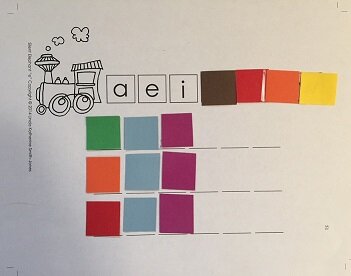Stephen stopped in the middle of our Zoom lesson, and looked me in the eyes, “Mrs. Jones, I’ve been thinking about something I’ve been wanting to tell you for a long time. Do you know how I felt all the time before I began tutoring with you?”
I looked at him thoughtfully as he was so serious. “No,” I replied, “but I’d love for you to tell me.”
“I felt like a railroad without tracks,” he said slowly and then quickly looked away. I could tell he felt uncomfortable, and this had been hard for him to say.
My brain began to whirl trying to picture what he had experienced and what he meant. “Please tell me more.”
Slowly Stephen began explaining, “For years and years, I tried so hard to make sense of what my parents, teachers and other tutors were teaching me. I felt my brain was built for learning concepts. I felt capable of learning. I really did.
“But I also felt dumb. I watched my teachers walk away from my desk – giving up on helping me. It took too much of their time to try to help me. They had so many other children to help. They began to ignore me. I felt so alone.
“My brain felt so scattered! My brain felt so disorganized! I needed railroad tracks to guide me.”
I could feel Stephen’s profound pain – it was palpable!
He continued, “I tried so hard to do what I thought was right, but I was never right!
“I could see and hear what my friends were doing, but no matter how hard I tried, I could never get it right. I thought I was the stupidest person alive! I felt like giving up!
“I’m so glad my mom didn’t give up on me. She was aware that I was developing numerous coping mechanisms – trying to cope in school with the way teachers and other kids looked at me, trying not to feel embarrassed in front of everyone, trying to learn and always failing, trying to keep on believing in myself.
“It was the best day of my life when my mom brought me to your house for tutoring. Within just a few minutes of meeting me, you told me that I was smart! You said that I would learn! You said that I just needed to be taught a in different way. You said I needed to be taught to read, write and spell the way MY brain learned!
“After just 3 weeks of tutoring with you, I suddenly could see and hear individual sounds within words (phonemic awareness). I finally got it! Before we did the caterpillar and train games, I couldn’t figure out what I was supposed to do when teachers and my parents said, ‘Just sound it out.’ When I began to hear the individual sounds within words, I knew I was going to be able to learn to read!
“When we started using colors for phonics, I felt relief and joy too! The color that helps me the most is the purple lines between syllables! The purple lines break the words into smaller pieces and then I can use the other colors to help me see the small phonetic parts of words that the letters form.”
As I listened, I was doing my best not to be too emotional. “Oh, Stephen, I’m so grateful to be your tutor!
“Hearing your words, I am reminded of just how serious and important a teachers’ job is and I’m reminded of the huge responsibility that I have to all my students.
“I’m so thankful I’ve been able to help you learn to read, write and spell so quickly! Do you remember that in just 2 years you went from a primer to a 9th grade reading level between the ages of 8 and 10?”
“Yes, I do remember,” he said with a big smile, “and my reading continues to grow and become even faster and smoother.”
“You are an extremely intelligent person! You and your family would never have given up on you!
“I’m so proud of you! You’re awesome!”
I could see the relief and pride in his eyes. He had realized his own growth and could feel a bright future ahead.
With smiles on our faces, we did our computer high five and returned to our lesson.
Phonemic awareness is the foundation of reading, writing and spelling. If a child doesn’t have phonemic awareness, they will struggle with reading, writing and spelling, it’s just that important.
Part 1 of Phonetic Reading with Silent Elephant “e”™ is 47 lessons in phonemic awareness. Part 2 has all the assessments you will need including a detailed phonemic awareness assessment.
When they finish Part 1, when they have phonemic awareness, their foundation of success is set and they will fly.
Contact me here, silentelephante@gmail.com! 😊





























